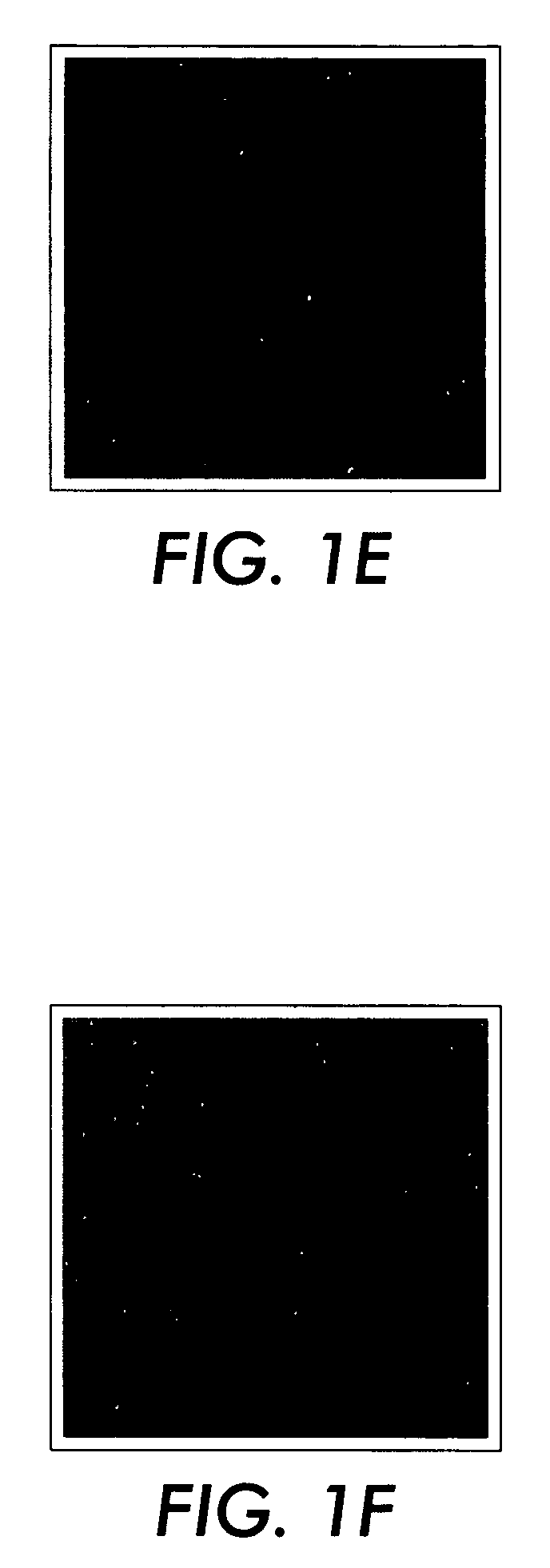Prevention or reduction of thermal cracking on toner-based prints
- Summary
- Abstract
- Description
- Claims
- Application Information
AI Technical Summary
Benefits of technology
Problems solved by technology
Method used
Image
Examples
example 1
Overprint Composition Formulation
[0044] The components of the overprint composition were combined in the following order with brief agitation between each addition with an overhead mixer: 67.8% amine modified polyether acrylate oligomer (3388 grams Laromer® PO94F (BASF Corp.)), 27% propoxylated2 neopentyl glycol diacrylate (1351 grams SR-9003 (Sartomer Co., Inc.)), 5.1% UV photoinitiator (1-hydroxyclyclohexylphenyl ketone (241 grams Irgacure® 184 (Ciba-Geigy Corp.)) and ethyl-2,4,6-trimethylbenzoylphenylphosphinate (15 grams Lucirin® TPO-L (BASF Corp.))), and 0.1% polyether modified polydimethylsiloxane (5.0 grams BYK®-UV3510 (BYK Chemie GmbH)). The mixture was stirred at room temperature for about four hours at high shear with an overhead mixer until the oligomer dissolved.
[0045] The overprint composition was coated on a variety of xerographic prints at a thickness of about 5 microns. The composition was subsequently cured using a Dorn SPE three roll coater (Dorn SPE, Inc.) with ...
example 2
Audi Thermal Shock Test for Measuring Thermal Cracking
[0046] A commercially available coating (#L9048 from Sovereign Chemicals (Sovereign Specialty Chemicals, Inc.)) was applied to several substrates containing either iGen3® (Xerox Corp.) toner or offset ink. The substrates were then subjected to the “Audi Thermal Shock Test” with 4 g / cm2 pressure (simulating approximately 2 reams of CX paper) under the various conditions set forth in Table 1. This test is an actual test used by Audi in evaluating its automobile manuals.
TABLE 1Audi Thermal Shock TestTemperatureTimeIncrease temperature from 23° C.2 hours(room temp.) to 70° C.Hold @ 70° C.4 hoursDecrease temperature from 70° C.2 hoursto −40° C.Hold @ −40° C.4 hoursIncrease temperature from −40° C.2 hoursto 70° C.Hold @ 70° C.4 hoursDecrease temperature from 70° C.2 hoursto −40° C.Hold @ −40° C.4 hoursIncrease temperature from −40° C.2 hoursto 23° C.
[0047] The key indicator of thermal cracking in the Audi Thermal Shock Test is the a...
example 3
Comparative Example Using the Audi Thermal Shock Test
[0048] Two commercial coatings (Sovereign Chemicals #L9048 (Sovereign Specialty Chemicals, Inc.) and Sun Chemicals #1170 (Sun Chemical Corp.)) and the overprint composition prepared in Example 1 were evaluated under identical conditions and subjected to the Audi Thermal Shock Test. The coated substrates (McCoy Gloss 100# Cover (Sappi Fine Papers) and Xerox® Digital Gloss 100# Cover (Xerox Corp.)) with iGen3® (Xerox Corp.) toner-based images were subjected to the Audi Thermal Shock Test with 4 g / cm2 pressure (simulating approximately 2 reams of CX paper) under the various conditions set forth in Table 1.
[0049]FIG. 1 illustrates that severe thermal cracking occurred using the Sun Chemicals #1170 (Sun Chemical Corp.) coating (FIGS. 1A-1B), substantial thermal cracking occurred using the Sovereign Chemicals #L9048 (Sovereign Specialty Chemicals, Inc.) coating (FIGS. 1C-1D), and no thermal cracking occurred using the inventive overpr...
PUM
| Property | Measurement | Unit |
|---|---|---|
| Fraction | aaaaa | aaaaa |
| Fraction | aaaaa | aaaaa |
| Electrical resistance | aaaaa | aaaaa |
Abstract
Description
Claims
Application Information
 Login to View More
Login to View More - R&D
- Intellectual Property
- Life Sciences
- Materials
- Tech Scout
- Unparalleled Data Quality
- Higher Quality Content
- 60% Fewer Hallucinations
Browse by: Latest US Patents, China's latest patents, Technical Efficacy Thesaurus, Application Domain, Technology Topic, Popular Technical Reports.
© 2025 PatSnap. All rights reserved.Legal|Privacy policy|Modern Slavery Act Transparency Statement|Sitemap|About US| Contact US: help@patsnap.com



